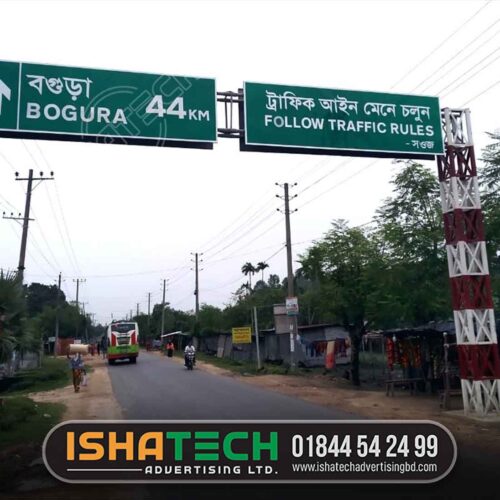Traffic or road signs are essential for maintaining order and safety on the roads. They provide critical information to drivers, pedestrians, and other road users. These signs are typically divided into three main categories: Regulatory Signs, Warning Signs, and Informative (Guide) Signs. ROAD SIGN BD.
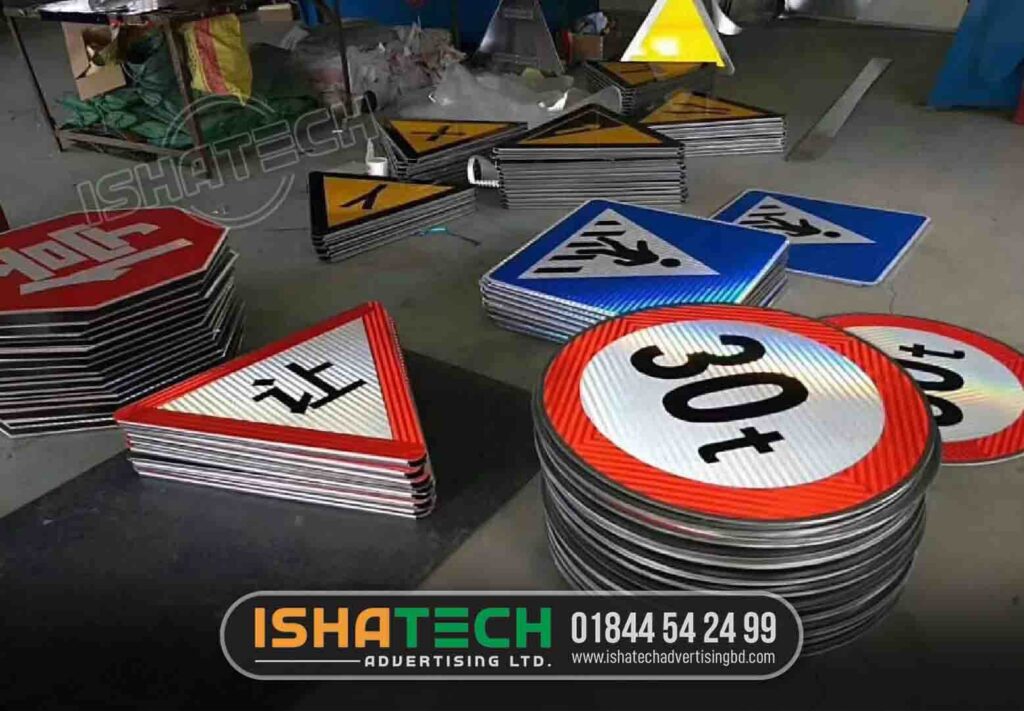
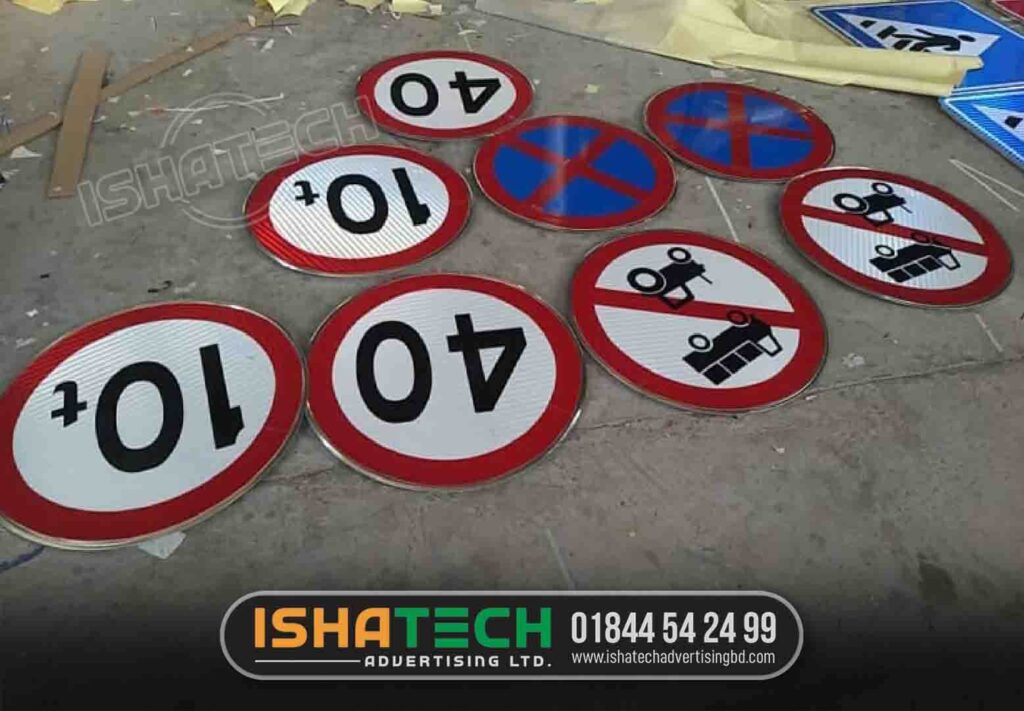
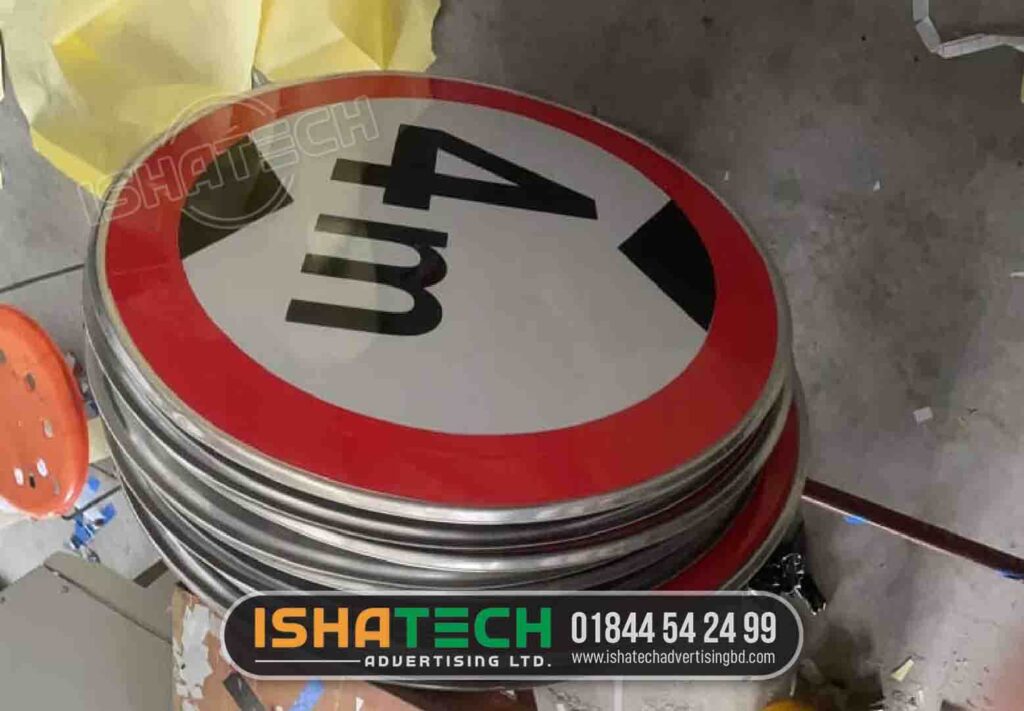
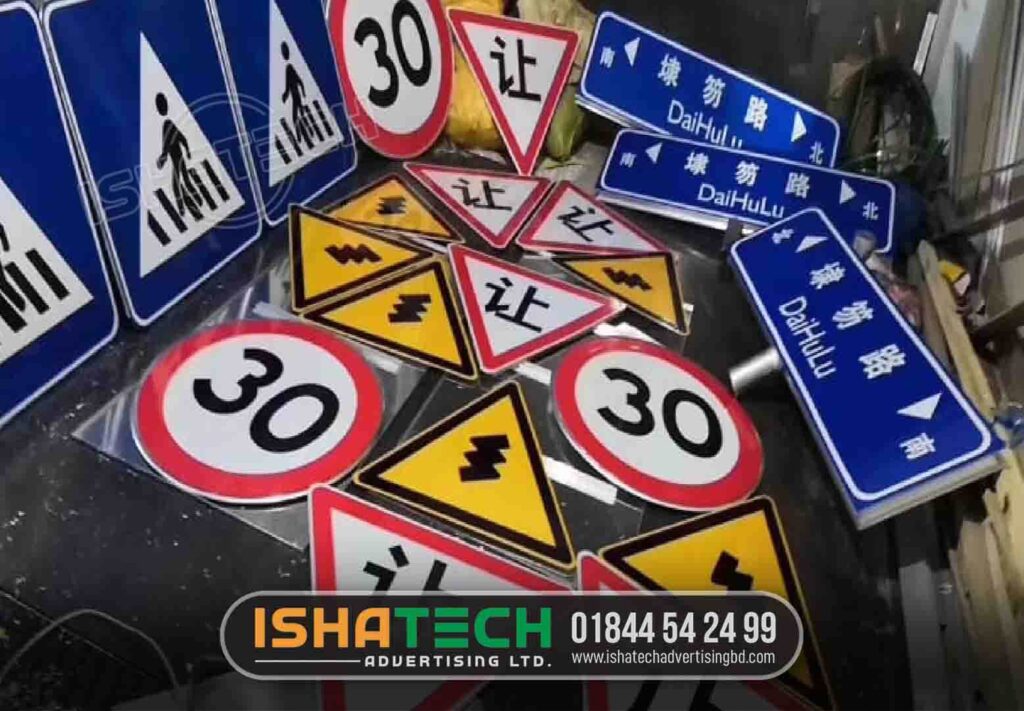
1. Regulatory Signs, ROAD SIGN BD
These signs are used to indicate rules and regulations that must be followed by road users. Disobeying these signs is usually a traffic violation.
- Stop Sign: A red octagonal sign that instructs drivers to come to a complete stop and ensure the way is clear before proceeding.
- Yield Sign: A triangular sign indicating that drivers must slow down and give the right of way to other vehicles or pedestrians.
- Speed Limit Sign: This sign indicates the maximum speed at which vehicles can legally travel on that particular road.
- No Entry Sign: Circular red signs indicating that vehicles are not allowed to enter that road or lane.
- One Way Sign: Indicates that traffic flows only in the direction shown by the arrow.
2. Warning Signs, ROAD SIGN BD
These signs warn drivers of potential hazards or changes in road conditions ahead. They are usually yellow and diamond-shaped.
- Pedestrian Crossing: Warns drivers of an upcoming pedestrian crosswalk.
- Curve Ahead: Alerts drivers to a curve in the road ahead, often with an indication of the direction and severity of the curve.
- Animal Crossing: Indicates areas where animals frequently cross the road.
- Slippery When Wet: Warns that the road may become slippery when wet, often due to rain or ice.
- Steep Hill: Indicates a steep incline or decline in the road.
3. Informative (Guide) Signs
These signs provide information to assist drivers in navigating their route or finding services.
- Route Marker Sign: Indicates the route number or highway number on which the driver is traveling.
- Destination Sign: Provides information on distances to nearby cities, towns, or major points of interest.
- Service Signs: Indicate the availability of essential services like gas stations, rest areas, hospitals, etc.
- Parking Signs: Provide information about parking regulations or restrictions.
- Exit Signs: Show the direction and distance to the nearest exit on highways or expressways.
4. Temporary Traffic Control Signs
These signs are often used in construction zones or during special events to guide and protect road users. They are typically orange and can be either regulatory or warning in nature.
- Road Work Ahead: Indicates that road construction or maintenance work is taking place ahead.
- Detour Sign: Informs drivers of a temporary route due to road closures or construction.
- Lane Closed: Warns drivers that a lane is closed ahead and they should merge into the open lane.
5. Special Purpose Signs
These are signs that don’t fit neatly into other categories but are still important for specific situations.
- School Zone: Indicates that the area is a school zone, where children may be crossing the road. Usually accompanied by a reduced speed limit.
- Railroad Crossing: Alerts drivers to an upcoming railroad crossing.
- Emergency Vehicle Station: Warns that an emergency vehicle station is nearby, and vehicles should be cautious of sudden exits by emergency vehicles.
Each of these signs plays a crucial role in ensuring the smooth flow of traffic and the safety of all road users. Understanding them and adhering to them is essential for safe driving.

